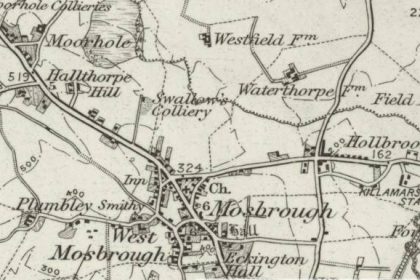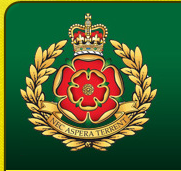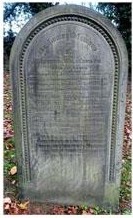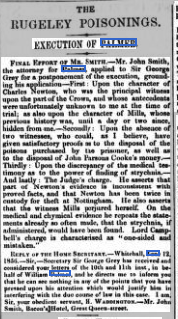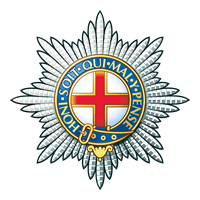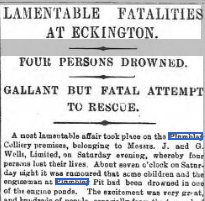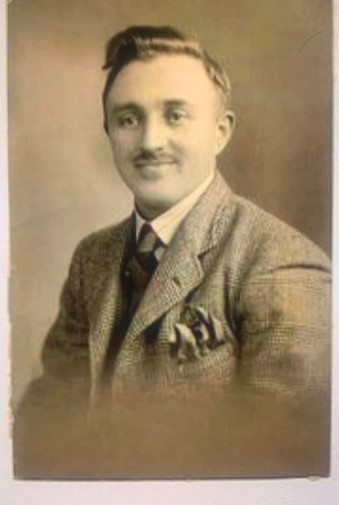Saxon House, Bake House, 31 South Street Mosborough Sheffield S20 5DE
It is not every day that a house been around for over a thousand years comes onto the market. We have had the pleasure and privilege of living in this fantastic house for fifty-five years and enjoyed every second of it. Initially the house was listed Grade 2 because of its Jacobean doorway.
This, more or less unique house, has five doorways, each from different periods in British History. Saxon, Jacobean, Georgian, 20th Century, and one that is difficult to date (Formerly No 29). Since this house was built there have been over forty monarchs on the throne.
The house was condemned in the late fifties as unfit for human habitation. We asked for and received permission to try to restore it. We had the good fortune to obtain the advice of a leading expert in the field of house dating and having its possible history explained We soon found that the house was indeed very much older than we had thought. Arguably one of the oldest houses in this part of England. It was originally built as a single large Saxon house, with raised crucks and wattle and daub (most probably a longhouse) Over the next millennium the house was altered many times. Some time before the arrival of the Normans in Britain all but two of the raised crucks were replaced by coursed masonry and a new distinctively Saxon doorway was created. To the rear of the hose (now bricked up but left unrendered) a hay rack or vestiges of a manger inside the house remain. For that period, it would have been conventional for livestock to been kept in the during night and in the winter. They would have kept geese to warn of intruders or wolves, Unfortunately, the very highly polished cobbles) where the animals were penned) were destroyed in order to install a waterproof membrane and concrete screed to the floor. We tried to have the truncated, crucks dated by the dendro chronology unit at South Street w running water a mile away where the street crosses the river Moss. It is very likely the hose was lost by fire and rebuilt in stone. However, two of the crucks the two still survive to bear witness.
From the Normans to the Elizabethans, we have not, been able to spot any signs of repair or alteration to No 31, but we can be sure that they must have been many and varied. However, we can see what the Jacobeans did. They decided to be become gentleman yeoman farmers and installed two large fireplaces, one in the master bedroom, complete with bible hole, and the other in the hall. During the restoration they further built an imposing doorway with a low lintel, which is difficult to attack with a raised sword. A further Georgian doorway was opened to take delivery of flour for baking bread on a retail scale, the masonry involved had been rounded to avoid snagging the sacks of flour (we later converted the doorway into a window). Usage changed again in Victoria’s reign when the house became a shop.
At this time, South Street was still the main route south. Under the shop floor we found at least 60 pennies, mostly dated 1806, a few brass weights, silver thimbles, bodkins and broken glass pieces, some of which were bullions which were reused in the glazing within the windows that you see today. We moved the panelled door from the cellar head to the hall. The oak floorboards were moved from the master bedroom to the hall. The four mullioned window was moved from overlooking the garden to the street side of the house. It is worth mentioning that two of the four mullions had been bricked up by previous occupants in an effort to reduce exposure to Window Tax. The cellar had two windows to permit light and hosed a large salting slab. The newel post to the central staircase is a copy of the Jacobean one found lying on the beaten earth floor where it is now sited (it is of note that it is very similar to the one in the chapel at Haddon Hall).
Some of the parts used in the restoration include the solid oak Jacobean spiral staircase, itself rescued from Pinxton Red Hall during the building of the M1 in the 1960’s. Each tread of this staircase weighs approximately 50 kg. A Jacobean window (Pinxton) was installed in the master bedroom. During the restoration of the house we enlarged the kitchen and built a coal shed/workshop at the top of the garden. We rescued the three mullioned windows from a house in Wadsley. A heavy oak stanchion in the kitchen has scorch marks from reed lights left burning untended. The counter in the kitchen was made of brown oak, using Jacobean studding. It is worth pointing out that up to the 1930s all heavy items had required horses and carts or drays to transport them. Built into the shed walls are three segments of stone trough from Green Lane Works. The monastic columns in the garden were rescued from a farm near Handsworth, each stone earing the mason’s mark, and each being marked in order with roman numerals, one assumes predating 1537. All the ground floors have been tanked to ceiling height with Newtonite Lath. The walled garden and opaque glazing provide total privacy.
When the Domesday Book was being compiled in 1086, there were at least eleven people of note living in Moresbury (Mosborough) at that time, namely Brother of Leofnoth, Geoffrey, Kolli, Leofric, Lyfing, Nigl, Ralp, Ralph Fitzhubert, Reynard and Serio. Who was living in South Street when King John signed the Magna Carta? When the black death struck? When the Thames froze over? In fact, when anything of note happened someone what living in South Street. In the meantime, life goes on Saxon House, as it has done for over thousand years.
Credit to Peter Bennett

